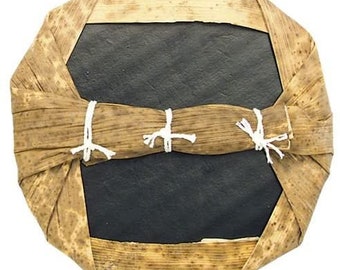

There also appears to be some horizontal baren suji marks. 15.A Left: Green bokashi Notes: “part of no 3 A, shading”. 13.a Left: Yellow bokashi (gradated printing) using same block as 7a NOTES: ‘part of 7a ” 14. Right:Refines warm lights.

13 Right: More subdued reds in flowers and kimono. You will notice at at this point (with the exception of 1.A and 2. Right: Introduces echos of red, but not that strong. 11.A Left: Flat medium red impression 12. Right: Introduces blue to the sky and separates from building. Right: Creates punchy colors as a focal point. Right: Breaks up previous red and re-enforces warm glow. 8.A Left: Flat light orange tone- bokashi or camera lighting? 9. Right: Emphasizes the glowing diffused light’s warm undertones. 6.A Left: flat blue tone 7. Right: creates neutral dark shadows by introducing a dark-value compliment (blue) on top of the warmer brown keyblock base. Using a color mixed from the warm carmine of 4.A and blue of 3.A unifies the building. Right: Purple separates from sky and lights- keeps lights clean. 4. Right: Establishing cools and defining mid-tones Notes: “Baren marks” 4.A Left: Flat carmine red impression 5. Right: Establishing warm tones reflecting lights and to offset cool reflections from sky 5.A Left: purple flat tone 6. The carving depicts rays near lights- see Detail above. It must have been a challenge for the printer to remember to wipe each spot! I’m guessing that one reason to make this an early choice is to maximize the texture as the paper has not been flattened yet. I also see evidence of wiping the lights despite the lack of notes mentioning it. 3.A Left: Cool gray impression using baren suji ( baren marks) The darker and harder marks on the street to increase reflections- printer probably used a different, harder baren to do this. The next seven flat impressions establish the building’s value and hue structure. Right: Introducing warm yellow under-printing. 2.A Left: flat (beta) lemon yellow impression 3. Right: overlapping effect of red to indicate glare and reduce the strength of brown keyblock. 1.A Left: Chinese red? impression using a stencil on keyblock’s inked block. Notes: “part of keyblock” 2. I think that may be one of many reasons why Yoshida’s work differs from other shin hanga prints (like Hasui’s). Glycerin tends to give a less sharp and more mottled and painterly look than the usual wood and water style printing.

As I mentioned in the first entry, Yoshida’s keyblocks were generally zinc plates and the pigment was mixed with glycerin which coats the metal. It looks as if the printer simply wiped these areas with his thumb and a small cloth. Right: Keyblock in brown Notes: “fukitori (wipe away)” This refers to the lighted areas in the lamps and wet street reflections that are wiped away to make room for the reddish color in the 2nd impression- both using the same block. Either way, thank you again Florida State University’s Art Collection! Left: page blank 1.
ZINC USE IN MOKU HANGA REGISTRATION
I believe I remembered the individual color sheets to be of a lesser quality paper that has become darker that the washi used for the cumulative impressions- this makes sense cost-wise and registration is not an issue. Since I did not take these images, there may be a lot of variation in lighting value and temperature. In this print, however, it’s clear to me that this design is all about featuring a night-time luminosity of reflections and glowing interiors. I’ve heard that if a woodblock design or printing wasn’t going that well, a publisher would decide make it into a night scene. Detail of 3.A block showing the light “rays” using ( kasure? or “faint”) carving and “fukitori” or wiped area printing Often the newly-printed colors merely appear to tint the previous colors rather than darken them. This can be explained in two ways: (1) the perception of value contrast as the solitary colors are surrounded by blank paper and (2) often colors on top of others are not absorbed into previously printed colors- especially if the paper is damp which creates somewhat of a resistance. I hope it’s not too much of an esoteric subject, but hey, I’m a geek about this stuff.įor my (and others’) sake, I have added some of the artist’s hand-written notes along with some of my own about what I believe each impression’s technical considerations were and how it was designed by the artist.įolks that are not familiar with overlapping colors may be surprised with how much stronger the impressions on the left sides (no.’s with A) appear in context with how they appear in the cumulative print on the right. This is a continuation of the first entry introducing this printīelow are the individual impressions for the shin hanga print “Flower Street After the Rain” or “Kagurazaka Dori” by Hiroshi Yoshida, 1929.


 0 kommentar(er)
0 kommentar(er)
